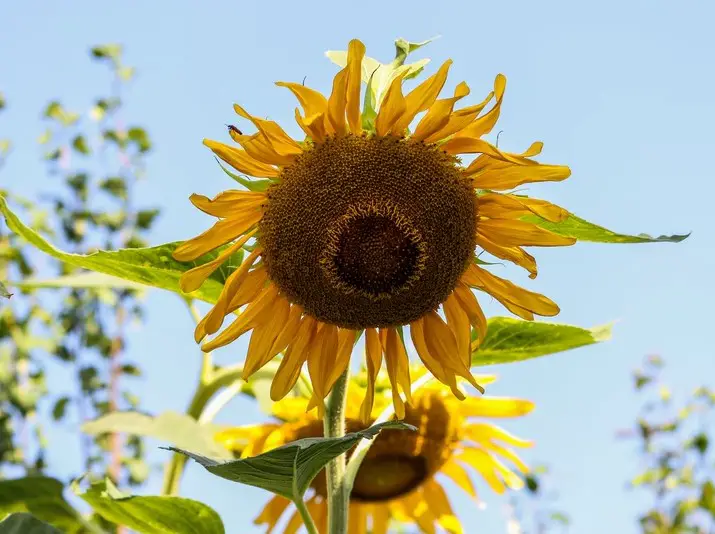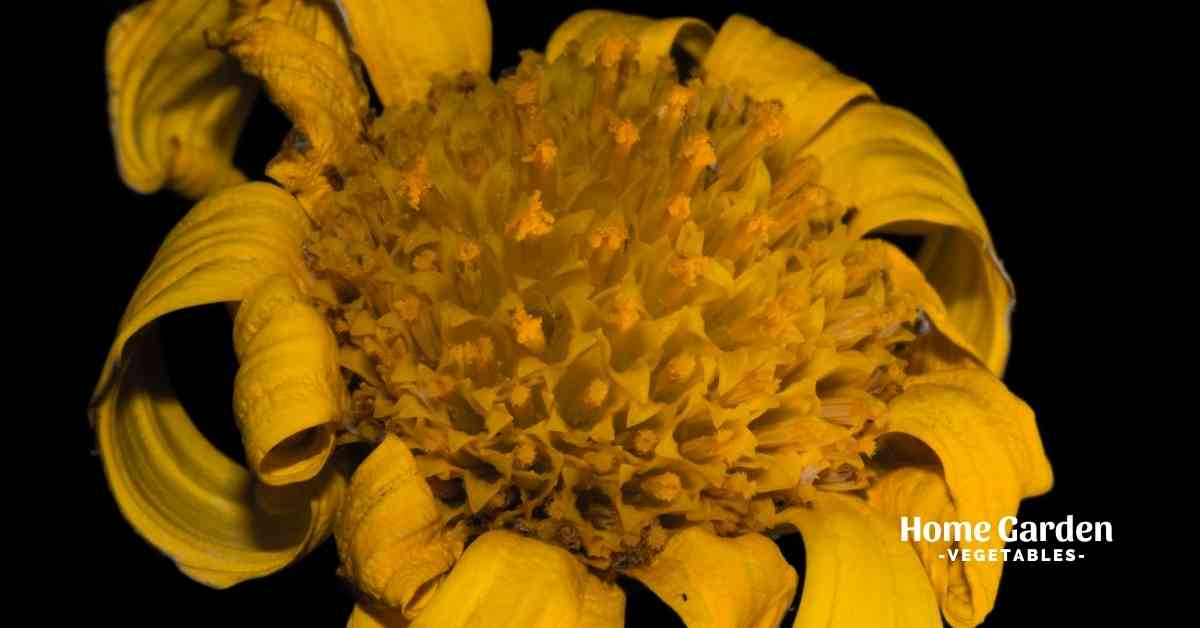Sunflowers are a favorite among gardeners. Some plants are as heat-tolerant, pest-resistant, and appealing to pollinators and birds as this one, with vivid flowers that last all summer. They create lovely cut flowers and their seeds, and oil provides food for both birds and humans. Sunflowers grow swiftly in most cases.

Sunflowers – A Beautiful Plant
The sunflower is a flowering plant with a huge daisy-like flower face that blooms every year. The Greek words helios, which means sun, and anthos, which means flower, are combined to form its scientific name.
Reader Poll: What online courses would interest you?
The blossoms are available in a variety of hues, including red, yellow, orange, brown, and maroon. They’re usually brilliant yellow with brown cores, and as they ripen, they form big heads full of seeds.
Sunflowers are heliotropic plants, which means that their blossoms turn to follow the Sun’s passage across the sky from east to west, and then turn back to face the east at night. It occurs in the early phases of the flower’s development before the blossom becomes overburdened with seeds. Sunflowers come in a wide range of colors and types from which to pick for your landscape.
Sunflower Leaves
Sunflowers have healthy green foliage with pairs of leaves sprouting at the same time. It’s highly useful to be able to identify sunflower seedlings by their leaves. Perhaps even more important is deciphering what the leaves are trying to tell you.
Subscribe to our newsletter!
The leaves of most sunflowers are heart-shaped or triangular. The leaves have different portions that are divided by a short spine. Generally dark green in color, the color of the leaf varies depending on the species of sunflower you’re cultivating.
As the sunflower plant grows taller, the leaves get considerably larger. They fill out and give the sunflowers a lovely leafy appearance. The leaves appear in pairs at a time.
Can You Eat Sunflower Leaves?
You can use sunflower leaves as salad greens, cooked in the same way as spinach, or baked in the same way as kale chips. The leaves can also be steeped to form tea, which is used as a herbal supplement.
What’s Eating Your Sunflower’s Leaves?
A variety of sunflower pests might be doing havoc on your plants. Look at the tops and bottoms of the leaves for any caterpillars, insect eggs, or other creatures.
Sunflower bugs eat on the leaves foliage and are seldom harmful to plants in small quantities or to older plants. The first genuine leaves on immature sunflower plants, on the other hand, might be badly damaged or totally devoured.
Issues with Sunflower Leaves
● Curling Leaves
Verticillium is a sunflower disease that causes curling and discoloration in the leaves. Verticillium-infected leaves have a mottled yellow, crusty brown, and green look.
● Droopy Leaves
Sunflower leaves that are drooping are a sign that your plant needs more water. Wilting leaves are the most common sign of a thirsty sunflower. Wilting, it turns out, may also be an indication of too much water.
● Crispy Brown Leaves
A sunflower with crisp brown leaves is most likely dehydrated or reaching the end of the growing season. This is the normal behavior of the leaves if you’ve left the sunflower seeds head on the plant to allow the seeds to develop.
● Holes in Leaves
Look at the top and bottom of each sunflower leaf to check if egg clusters or a few eggs are hidden. You should also keep an eye out for sunflower pests, particularly caterpillars, which can destroy sunflower seeds that you want to conserve or eat.
● Yellow Leaves
Yellow sunflower leaves indicate that your sunflower is either overwatered or has inadequate drainage. The leaves of the plant may turn yellow if it receives too much water from rain or irrigation. A nitrogen deficit might also be indicated by yellow leaves.
Reasons for Sunflower Leaf Curl
● Watering Issues
The primary and most prevalent problem is that they are not receiving enough water, or in some circumstances, too much water, which is usually due to soggy soil.
Make sure you take into account the sort of soil you’ll be using and that it’s well-drained. If you’re growing sunflowers in a container, ensure sure the bottom of the pot has holes to allow water to drain freely.
● Fungal Diseases
While sunflowers are typically hardy, they are vulnerable to a variety of fungal infections caused by environmental factors. Airborne spores can adhere to the leaf of sunflowers, even if they are planted in well-drained soil, and wait for the right circumstances to germinate.
Leaf spot, which causes the leaves to darken and develop brown or grey areas, is a common fungal illness in sunflowers. The blotches continue to expand, disfiguring the leaves and, in more catastrophic situations, killing the plant.
To avoid damaging the rest of the plants, dispose of infected leaves when dealing with fungal infections.
● Mineral Deficiency
Water and proper nutrients are required for all plants to flourish. You should check to see whether the sunflowers are getting enough nutrients if they aren’t overwatered and if they aren’t being attacked by pests. Mineral shortages, such as a lack of boron, potassium, calcium, or nitrogen, usually harm the plant’s leaves, causing them to distort and discolor.
● Pests
Sunflowers may be damaged by small insects like whiteflies, thrips, and aphids if they establish a large enough infestation. What all of the insects described have in common is that they feed on the sap from the leaves.
The insects release honeydew after digesting the sap, which stimulates the formation of sooty mold. Examine the undersides of the leaves and stems for signs that can help you identify the pest. You can typically get a standard pesticide spray at your local garden shop or order it online.
Conclusion
A sharp eye is required to diagnose the condition that is affecting your sunflower leaves. This is due to the fact that the symptoms are minor at first and difficult to identify. Choosing a course of action will be simple after you’ve determined if the problem is caused by a bug, a chemical, or a low water level.

